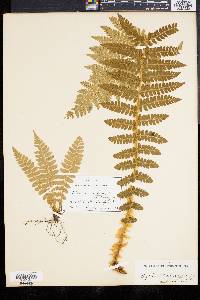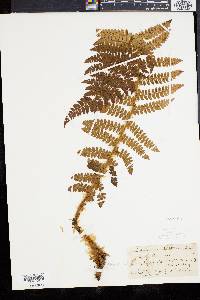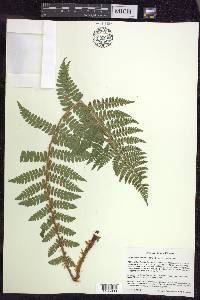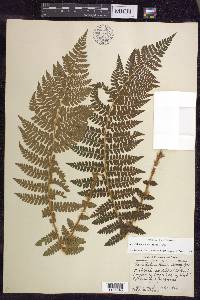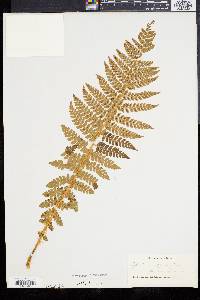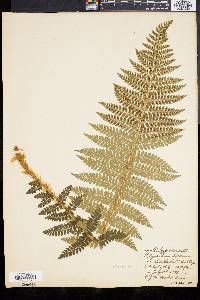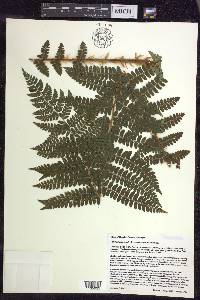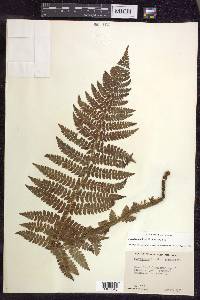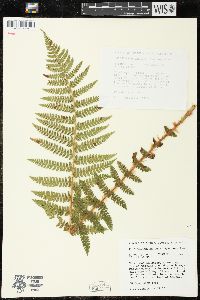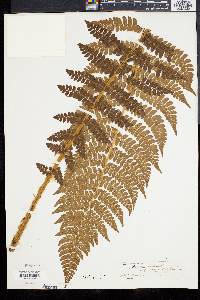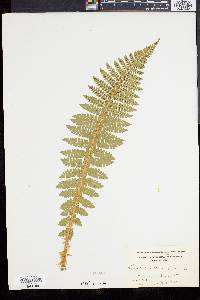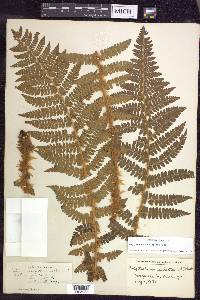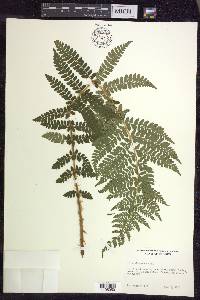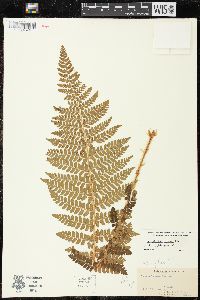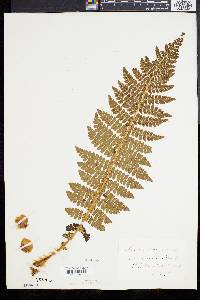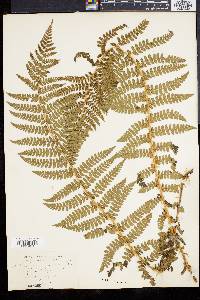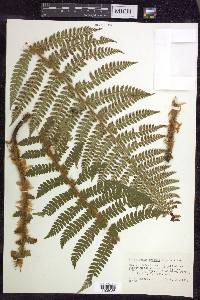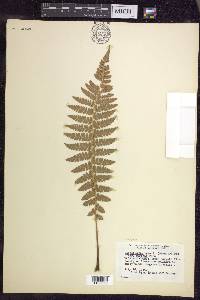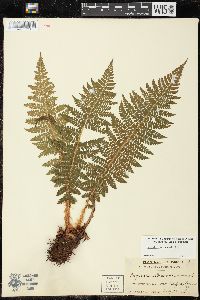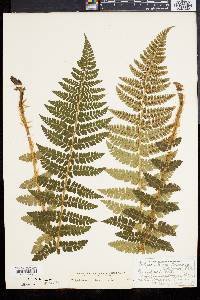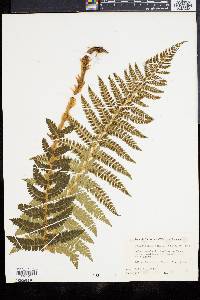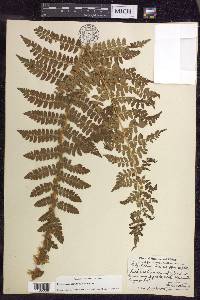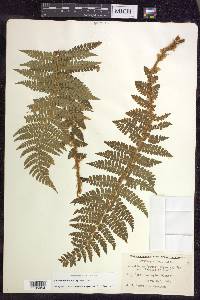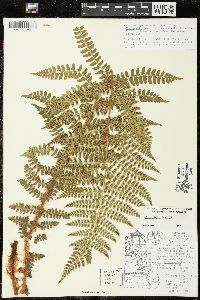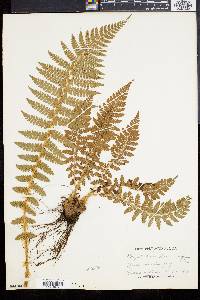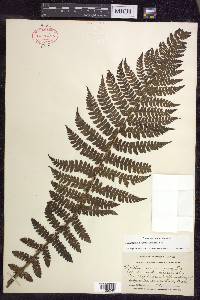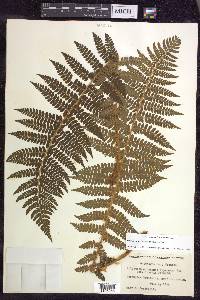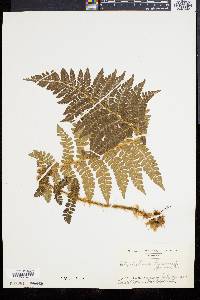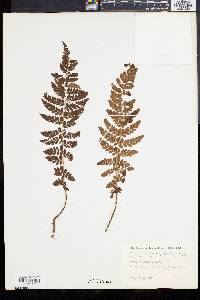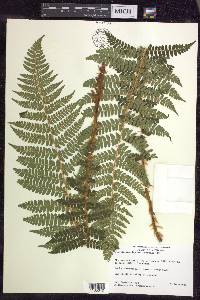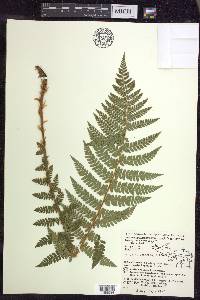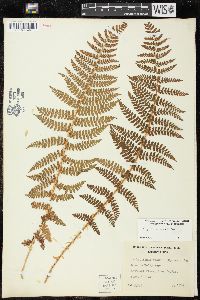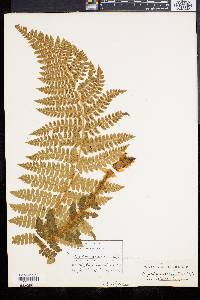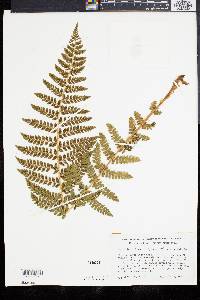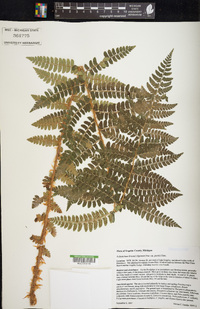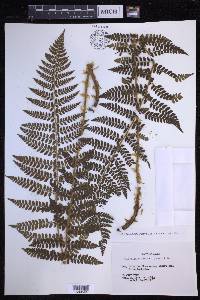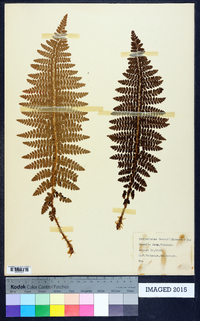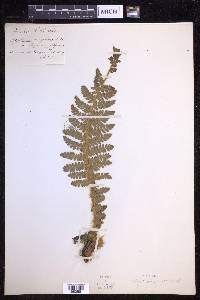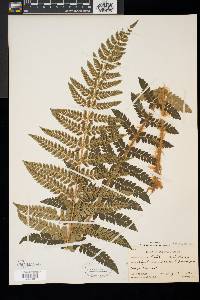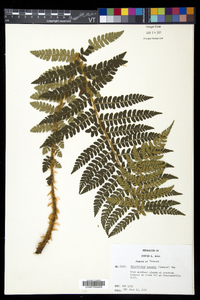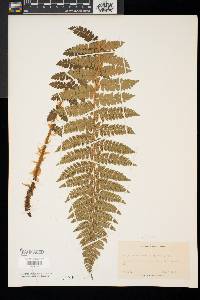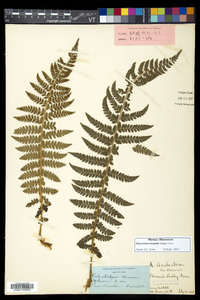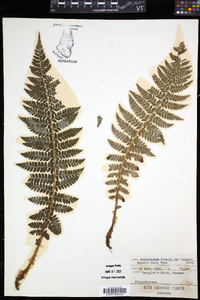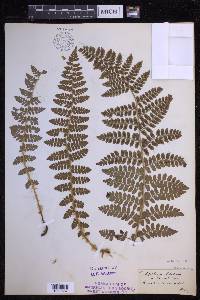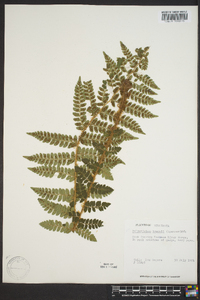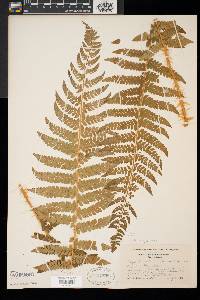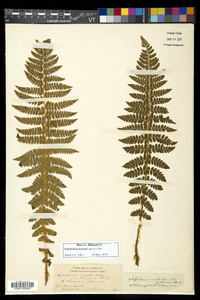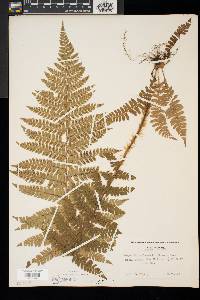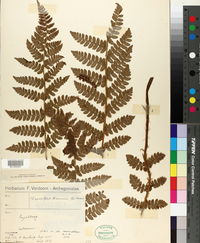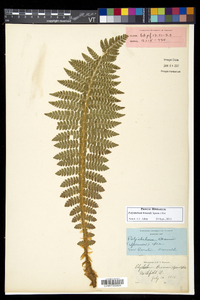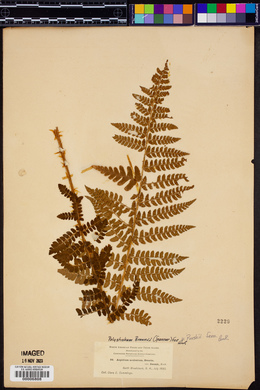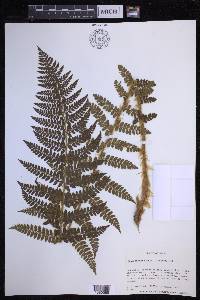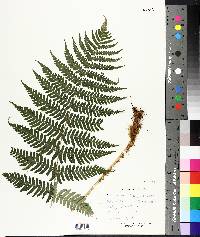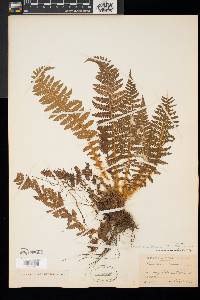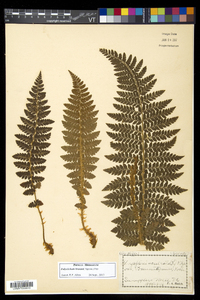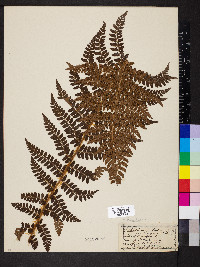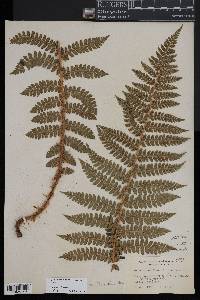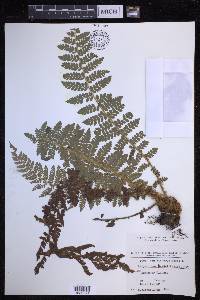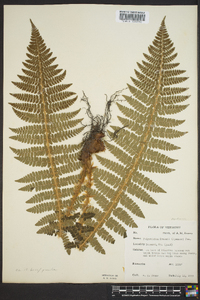Polystichum braunii
|
|
|
|
Family: Dryopteridaceae
Braun's Holly Fern
[Aspidium braunii Spenn., moreDryopteris braunii (Spenn.) Underw., Polystichum aculeatum var. braunii (Spenn.) Davenp.] |
Stems erect. Leaves monomorphic, arching, 2--10 dm; bulblets absent. Petiole 1/8--1/6 length of leaf, densely scaly; scales light brown, gradually diminishing in size distally. Blade broadly lanceolate, 2-pinnate; base narrowed. Pinnae oblong-lanceolate or falcate, proximal pinnae ± rectangular, not overlapping, in 1 plane, 2--10 cm; base oblique except proximal 3--4 pinnae, where auricles not developed; apex acute, subapical and apical teeth same size; microscales filiform to linear, lacking projections, dense abaxially, sparse adaxially. Pinnules ± stalked, short-falcate to oblique-rhombic, acroscopic auricle well developed on proximal pinnules; margins dentate, with slender bristle tips; apex broadly acute. Indusia ciliate. Spores brown. 2 n = 164. Moist places in boreal forests; interior moist forests; 0--300 m; St. Pierre and Miquelon; B.C., N.B., Nfld., N.S., Ont., Que., Yukon; Alaska, Conn., Idaho, Maine, Mass., Mich., Minn., N.H., N.Y., Vt., Wis.; Eurasia. Because no diploid ancestors have been found, Polystichum braunii is thought to be an ancient tetraploid. Its sterile hybrid with P . acrostichoides , P . × potteri , is discussed under P . acrostichoides . Polystichum braunii × lonchitis has been reported from southeast Alaska (S. L. Welsh 1974). This hybrid has been cytologically confirmed in Europe and named P . × meyeri Sleep & Reichstein (A. Sleep and T. Reichstein 1967). It has narrower and less divided leaves than P . braunii and poorly developed auricles. Polystichum braunii × lonchitis was described by J. Ewan (1944), but the type (from British Columbia) is P . braunii × munitum (A. Sleep and T. Reichstein 1967). This latter hybrid is the postulated progenitor of P . setigerum (D. H. Wagner 1979). North American P . braunii has been segregated as var. purshii Fernald, distinguished from European populations (var. braunii ) by having broader microscales.
Rhizome erect, lvs 3-9 dm; petiole 13-18 cm, densely scaly; blade lanceolate, 7-17 cm wide, acuminate, reduced below, essentially bipinnate; pinnae 30-40 pairs, acuminate, alternate above, the lower subopposite; pinnules 9-15 pairs on the larger pinnae, ovate-deltoid to ovate-oblong, acute, spinulose-denticulate with incurved teeth, the veins of both surfaces bearing linear scales; sori in one row on each side of the midrib; indusium pale, sublobate; 2n=164. Upland woods and rock ledges in circumneutral soil; circumpolar, s. to Mass., N.Y., Pa., Mich., Wis., and n. Minn. The Amer. plants differ slightly from the Eurasian ones and have been segregated as var. purshii Fernald. A hybrid with no. 1 [Polystichum acrostichoides (Michx.) Schott] is P. ذotteri Barrington. Gleason, Henry A. & Cronquist, Arthur J. 1991. Manual of vascular plants of northeastern United States and adjacent Canada. lxxv + 910 pp. ©The New York Botanical Garden. All rights reserved. Used by permission. |



